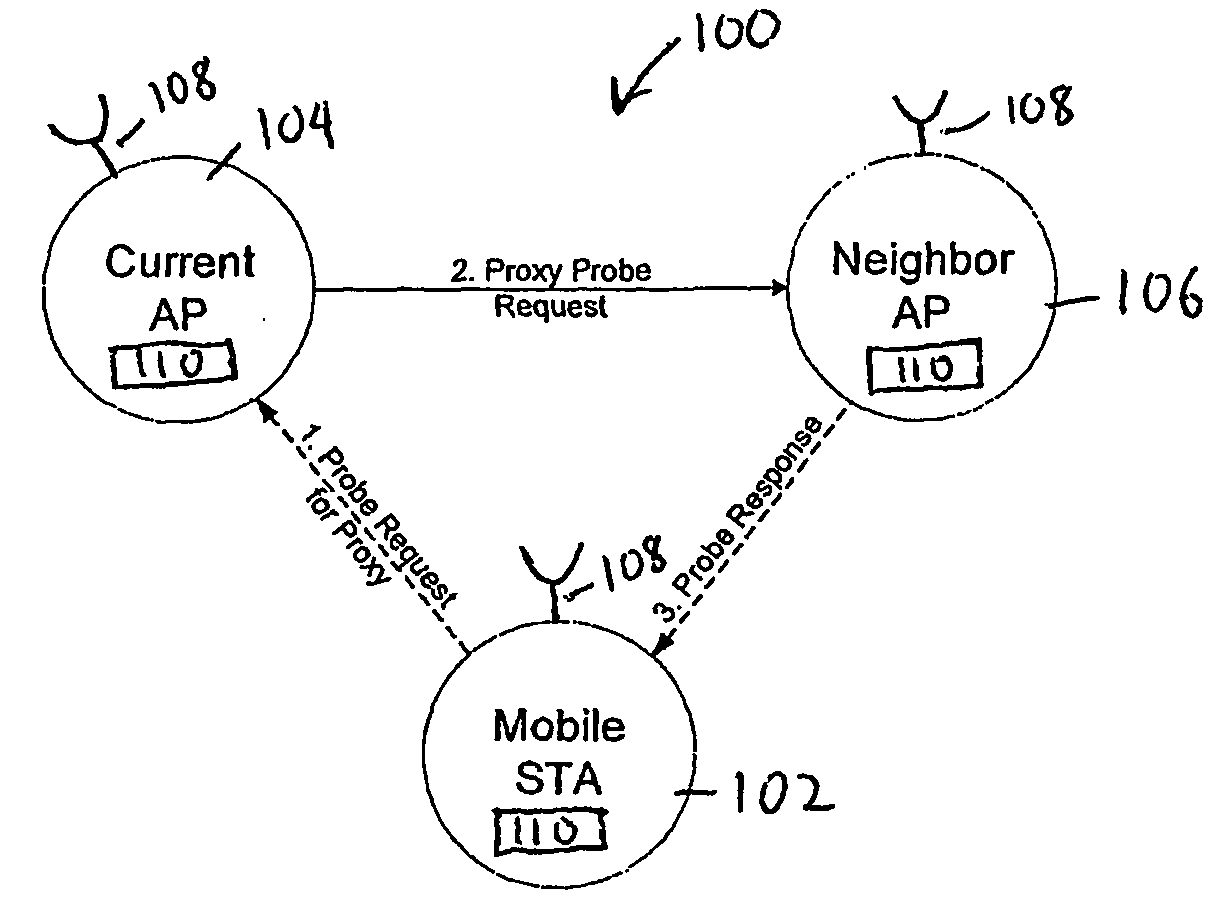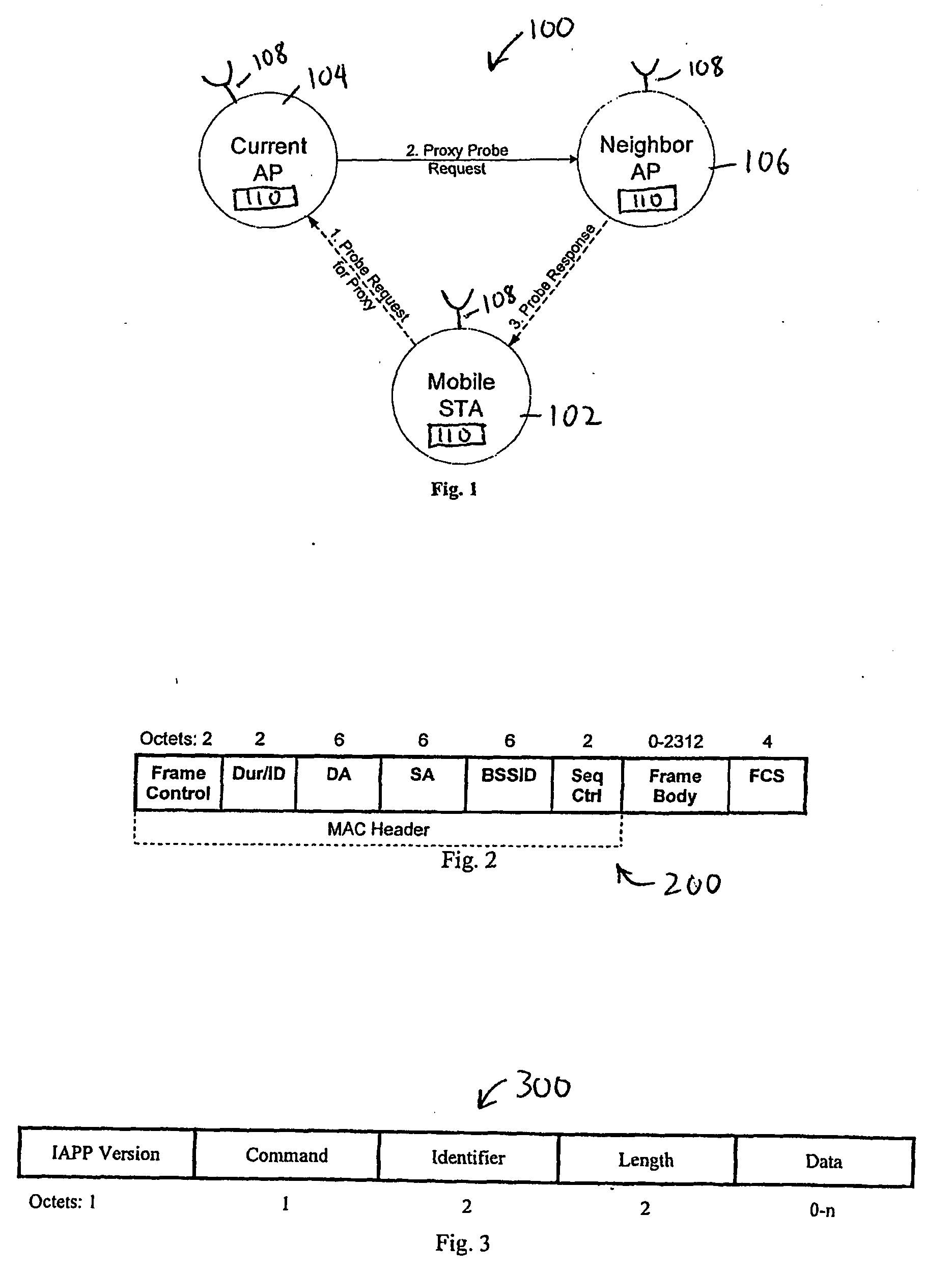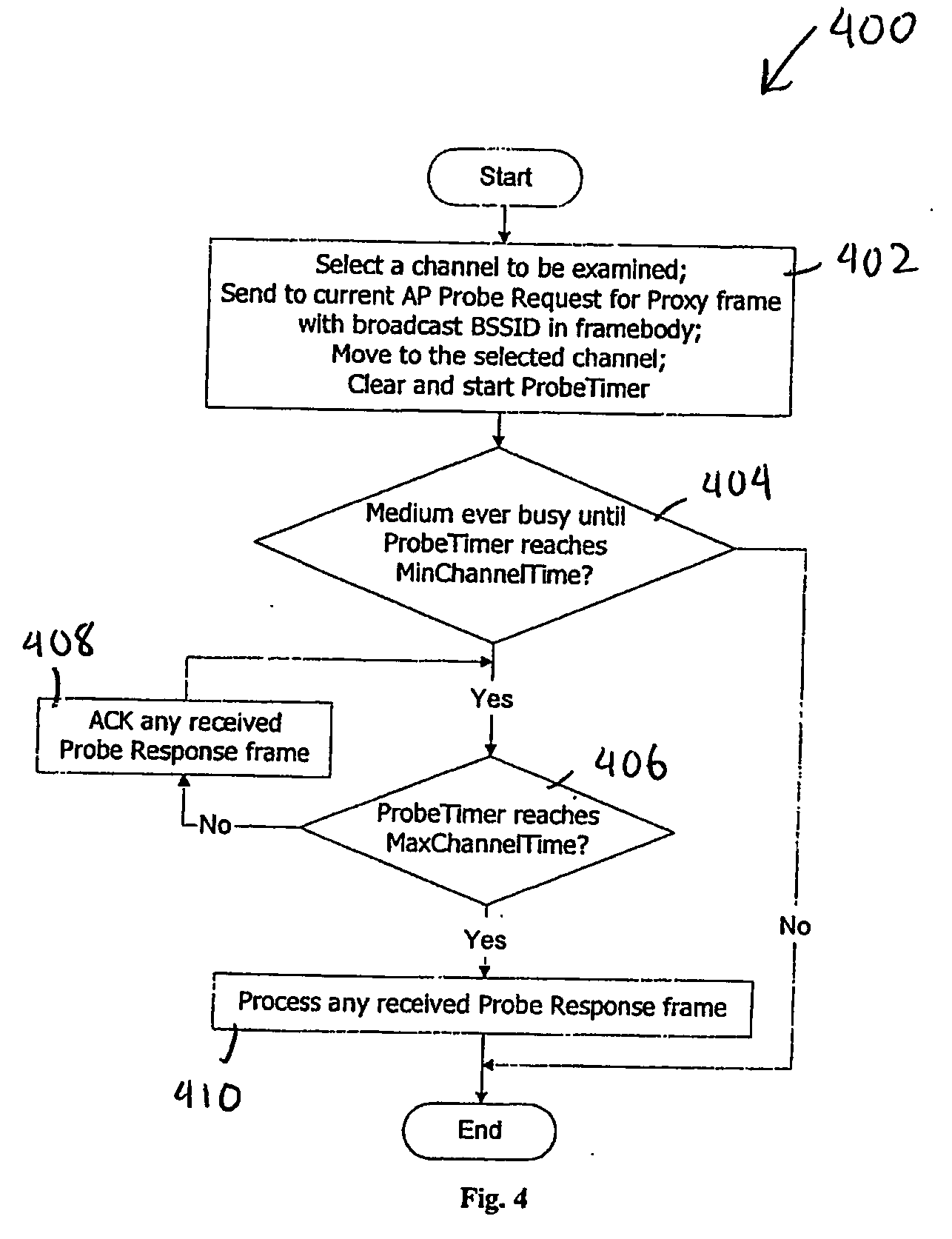Proxy active scan for wireless networks
a wireless network and proxy technology, applied in the field of wireless local area network scanning and establishing communications, can solve the problems of large scanning time, insufficient speed to prevent communication interruption, and reduced throughput, and may seriously deteriorate the quality of voice servi
- Summary
- Abstract
- Description
- Claims
- Application Information
AI Technical Summary
Benefits of technology
Problems solved by technology
Method used
Image
Examples
Embodiment Construction
[0033] According to one aspect of the present invention, an active scanning method in a wireless network uses inter-AP (Access Point) communication for determining available access points. In the scanning method, a mobile station sends a Probe Request for Proxy frame to the current AP serving the mobile station. In response to the Probe Request for Proxy frame, the current AP send Proxy Probe Request packet to the appropriate APs. In response to the Proxy Probe Request packet, the neighbor APs send a Probe Response frame to the mobile station on its operating channel. Since the mobile station moves to the channel being examined after sending the Probe Request for Proxy frame, the mobile station receives the Probe Response frame if the mobile station is in the coverage area of the neighbor AP. The content of Probe Response frame provides the mobile station with the information to be used in handoff decision and network join procedures.
[0034]FIG. 1 is a block diagram of a network 100...
PUM
 Login to View More
Login to View More Abstract
Description
Claims
Application Information
 Login to View More
Login to View More - R&D
- Intellectual Property
- Life Sciences
- Materials
- Tech Scout
- Unparalleled Data Quality
- Higher Quality Content
- 60% Fewer Hallucinations
Browse by: Latest US Patents, China's latest patents, Technical Efficacy Thesaurus, Application Domain, Technology Topic, Popular Technical Reports.
© 2025 PatSnap. All rights reserved.Legal|Privacy policy|Modern Slavery Act Transparency Statement|Sitemap|About US| Contact US: help@patsnap.com



